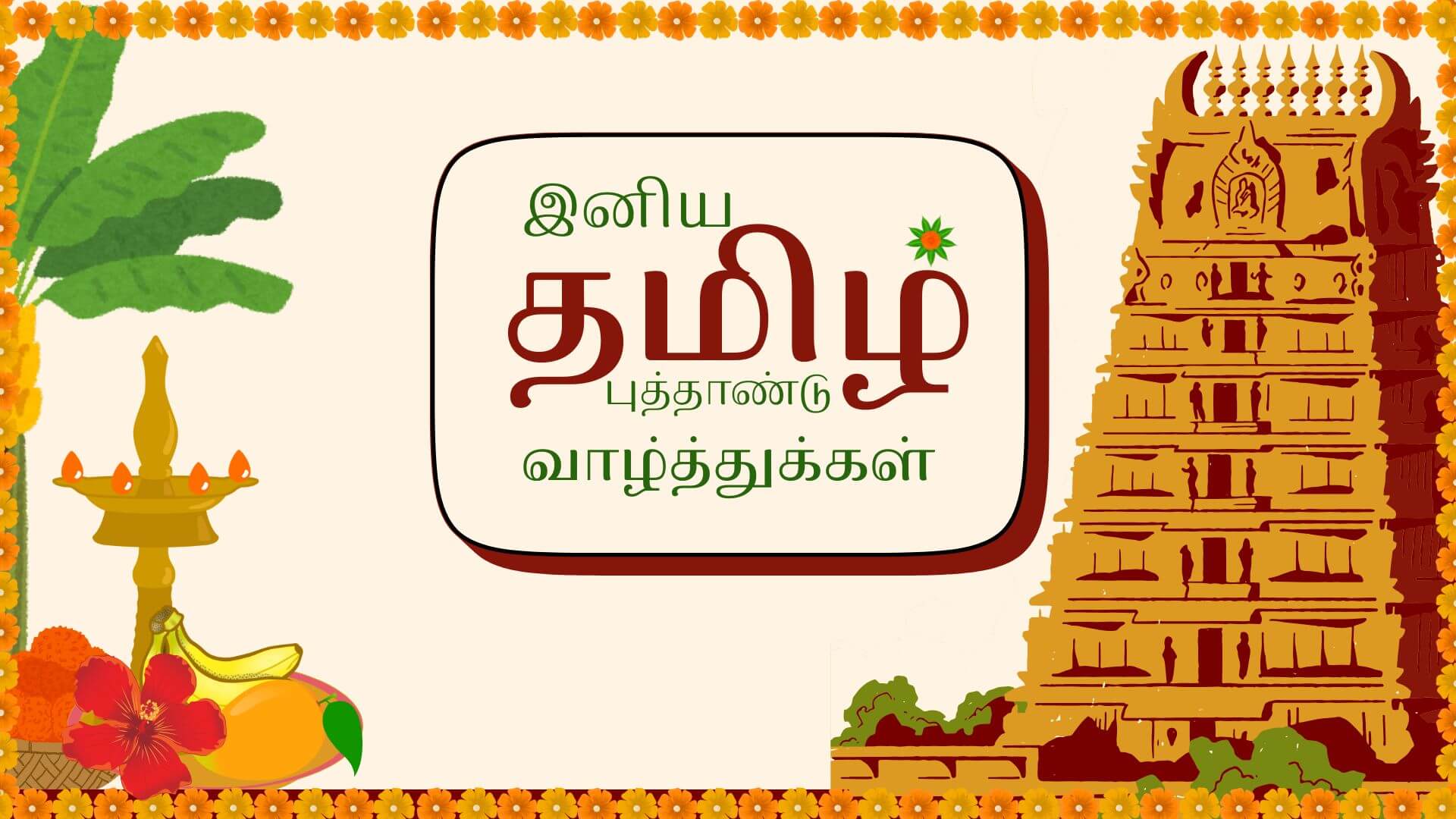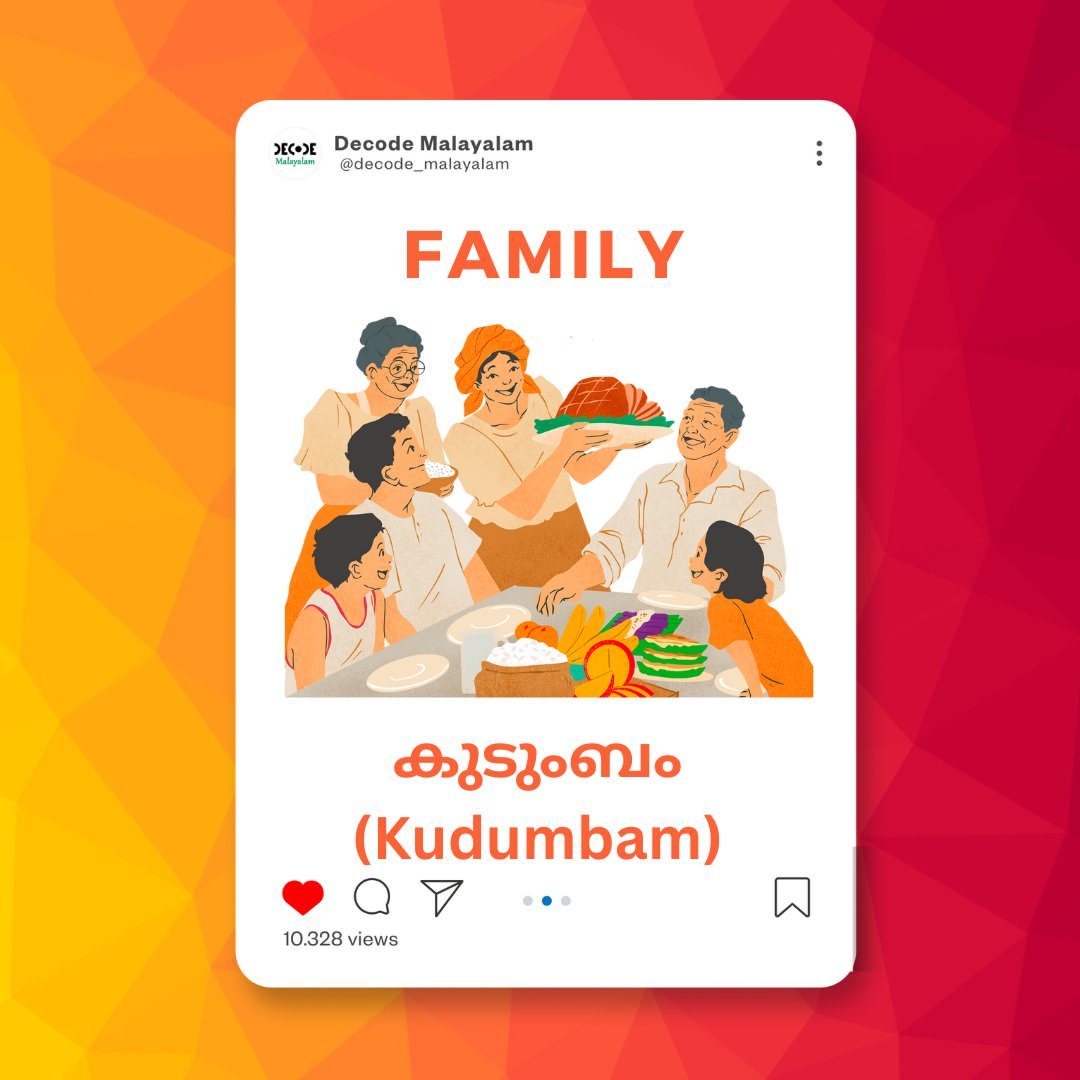Unlock the Secrets of Tamil Months: A Journey Through Time and Culture
Hey everyone, Vanakkam and welcome to Decode Tamil! Today, we’re embarking on a fascinating journey, one that will take us through the very heart of Tamil culture and tradition: the Tamil months.
Now, you might be thinking, “Months are months, right? What’s so special about Tamil months?” Oh, my friends, you’re in for a delightful surprise! Unlike the Gregorian calendar we often use in our daily lives, the Tamil calendar isn’t just a way to mark time; it’s a living, breathing tapestry woven with agricultural wisdom, astronomical precision, and a rich history of festivals, rituals, and cherished memories.
At Decode Tamil, our mission is to make learning Tamil engaging and insightful. And truly understanding Tamil isn’t just about grammar and vocabulary; it’s about delving into the cultural nuances that shape the language. And what better way to do that than by exploring the very rhythm of life as celebrated in Tamil Nadu?
So, grab a cup of your favorite filter coffee, settle in, and let’s decode the magic of the Tamil months, one by one. By the end of this article, you won’t just know their names; you’ll feel their pulse, understand their significance, and perhaps even feel a deeper connection to the vibrant soul of Tamil culture.
—Why Do Tamil Months Matter So Much? More Than Just a Calendar!
Before we dive into the individual months, let’s understand why the Tamil calendar holds such profound importance.
- Agricultural Rhythms: For centuries, the lives of Tamils, particularly in rural areas, have been intrinsically linked to agriculture. The Tamil calendar is a direct reflection of the planting, growing, and harvesting cycles. Each month traditionally signals specific agricultural activities, ensuring a harmonious relationship with nature.
- Festivals and Celebrations: If you’ve ever experienced a festival in Tamil Nadu, you’ll know the sheer joy and devotion they bring. Almost every major Tamil festival, from Pongal to Diwali, is meticulously tied to a specific Tamil month. Understanding the months helps you anticipate and appreciate these vibrant celebrations.
- Astrology and Auspicious Beginnings: For many Tamils, the calendar plays a significant role in daily life decisions. Each month, and even specific days within them, can be considered auspicious or inauspicious for events like weddings, housewarmings, or starting new ventures. This is deeply rooted in Tamil astrological beliefs.
- Cultural Identity and Heritage: The Tamil calendar is a powerful symbol of Tamil identity. It’s a system passed down through generations, connecting us to our ancestors and preserving ancient traditions. Knowing the Tamil months is a key part of understanding and appreciating this rich heritage.
- Connecting with the Language: As you learn the names of the months, you’ll also encounter related vocabulary, proverbs, and cultural references that will deepen your understanding and fluency in Tamil. It’s a linguistic treasure trove!
Your Guide to the 12 Tamil Months: A Journey Through the Year
The Tamil calendar is a solar calendar, meaning it’s based on the movement of the sun. It has 12 months, and the New Year traditionally begins in the month of Chithirai. Let’s explore each one:
1. Chithirai (சித்திரை): The Dawn of a New Beginning
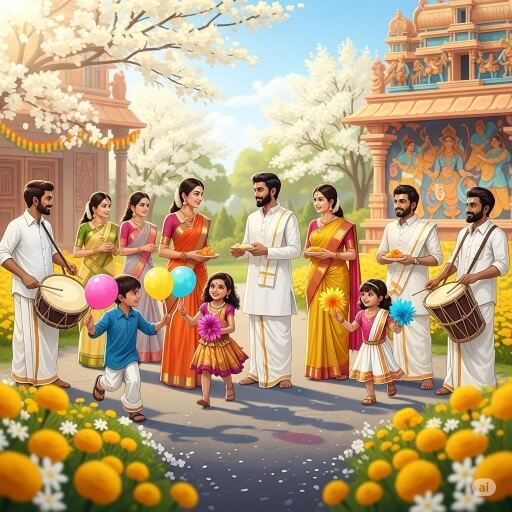
- Approximate Gregorian Months: Mid-April to Mid-May
- Significance: Chithirai marks the beginning of the Tamil New Year, known as Puthandu (or Puthu Varudam). It’s a time of immense joy, hope, and fresh starts. Homes are cleaned, kolams (rangoli) are drawn, and families gather for special feasts.
- Key Festivals:
- Puthandu (Tamil New Year): Celebrated with much fanfare, special prayers, and traditional meals like Maanga Pachadi (a sweet, sour, and spicy mango dish).
- Chithirai Thiruvizha: A grand temple festival celebrated primarily in Madurai, showcasing the celestial wedding of Goddess Meenakshi and Lord Sundareswarar. It’s an absolutely magnificent spectacle!
- Cultural Tidbit: The warm weather of Chithirai is often associated with the blossoming of flowers and the general feeling of rejuvenation in nature.
2. Vaikasi (வைகாசி): The Month of Auspiciousness

- Approximate Gregorian Months: Mid-May to Mid-June
- Significance: Vaikasi is considered a very auspicious month for religious activities and temple festivals. It’s a period of intense devotion and spiritual practices.
- Key Festivals:
- Vaikasi Visakam: Celebrated as the birthday of Lord Murugan (Kartikeya), the son of Shiva. Devotees visit Murugan temples, offering prayers and performing Kavadis. It’s a powerful demonstration of faith.
- Buddha Poornima (Vesak): While primarily a Buddhist festival, it often falls in Vaikasi and is recognized for its significance.
- Cultural Tidbit: The heat of Vaikasi can be intense, and traditionally, people would plan religious events indoors or during cooler parts of the day.
3. Aani (ஆனி): The Month of Devotion and Divine Weddings
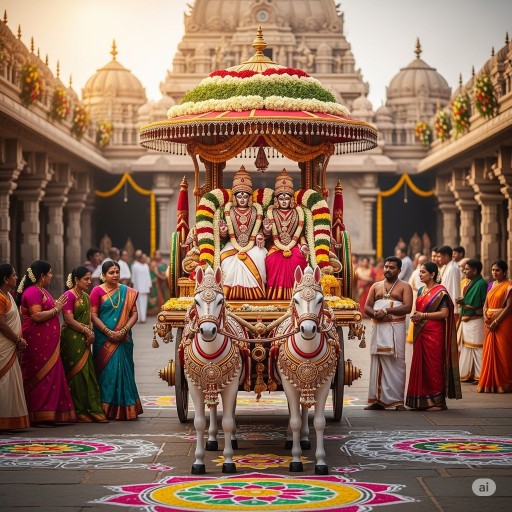
- Approximate Gregorian Months: Mid-June to Mid-July
- Significance: Aani is another month brimming with religious fervor, particularly known for temple car festivals (Ther Thiruvizha) where deities are taken in grand processions. It’s also associated with divine weddings.
- Key Festivals:
- Aani Thirumanjanam: Celebrated in Shiva temples, especially at Chidambaram, honoring Lord Nataraja (the dancing form of Shiva). It’s a breathtaking display of devotion and classical arts.
- Many temple car festivals occur during this time across Tamil Nadu.
- Cultural Tidbit: As the pre-monsoon showers might begin, Aani bridges the gap between the hot summer and the upcoming rainy season.
4. Aadi (ஆடி): The Month of Shakti and Feminine Energy
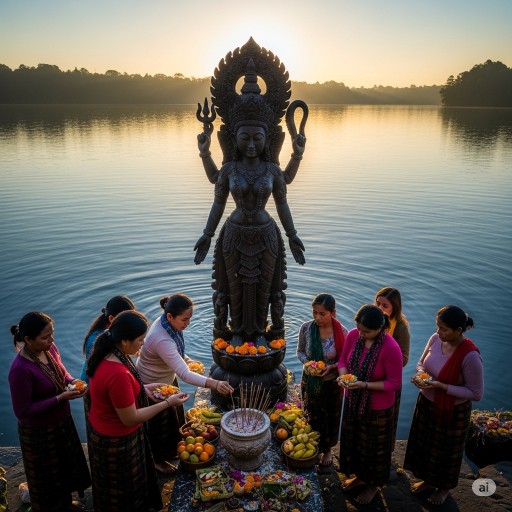
- Approximate Gregorian Months: Mid-July to Mid-August
- Significance: Aadi is a unique and highly significant month, dedicated primarily to Amman (Mother Goddess) and other female deities. It’s a time for seeking blessings for fertility, prosperity, and protection. Many households observe special prayers and rituals.
- Key Festivals:
- Aadi Perukku: Celebrated on the 18th day of Aadi, it’s a festival of gratitude to water bodies, particularly rivers. Women offer prayers and perform rituals to ensure good monsoon and agricultural prosperity.
- Aadi Velli (Fridays in Aadi): Every Friday in Aadi is considered extremely auspicious for worshipping Amman. Special pujas are performed in temples and homes.
- Mariamman Festivals: Numerous festivals dedicated to Goddess Mariamman (the goddess of rain and disease protection) are celebrated with fervor throughout the month.
- Cultural Tidbit: Aadi is often considered a month when new ventures, especially weddings, are avoided by some, as it’s seen as a period of intense spiritual energy and focus on the divine feminine.
5. Avani (ஆவணி): The Month of New Learnings and Auspicious Beginnings

- Approximate Gregorian Months: Mid-August to Mid-September
- Significance: Avani is regarded as an auspicious month for starting new educational endeavors, seeking knowledge, and performing various rituals. It’s a time for scholarly pursuits and spiritual reflection.
- Key Festivals:
- Avani Avittam (Upakarma): A significant day for Brahmins to renew their sacred thread (poonool) and perform rituals dedicated to their ancestors and Gurus.
- Vinayagar Chathurthi (Ganesh Chaturthi): While celebrated across India, it’s a major festival in Tamil Nadu too, honoring Lord Ganesha with elaborate idols and offerings.
- Onam: The harvest festival of Kerala, often falls in Avani, influencing celebrations in border areas of Tamil Nadu.
- Cultural Tidbit: The weather begins to cool slightly in Avani, making it a comfortable month for outdoor activities and religious gatherings.
6. Purattasi (புரட்டாசி): The Month of Devotion to Vishnu and Ancestors
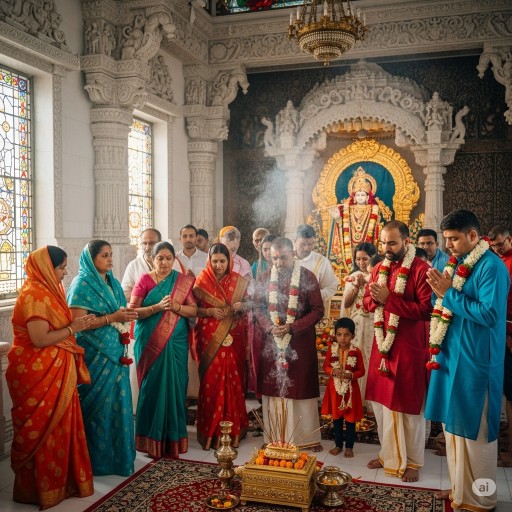
- Approximate Gregorian Months: Mid-September to Mid-October
- Significance: Purattasi is a highly revered month, especially for devotees of Lord Vishnu. Many observe fasts and undertake pilgrimages. It’s also a significant period for honoring ancestors.
- Key Festivals:
- Purattasi Sanikizhamai (Saturdays in Purattasi): Every Saturday in Purattasi is dedicated to Lord Venkateswara (a form of Vishnu). Many devotees observe strict fasts and visit Vishnu temples.
- Navarathri (Nine Nights): A major pan-Indian festival, Navarathri is celebrated with immense grandeur in Tamil Nadu, dedicated to the Goddesses Durga, Lakshmi, and Saraswati. Homes are adorned with Kolu (doll displays), and cultural performances are held.
- Cultural Tidbit: Some Tamils observe a vegetarian diet throughout Purattasi, even if they are non-vegetarian normally, as a mark of devotion.
7. Aippasi (ஐப்பசி): The Month of Abundance and Lights

- Approximate Gregorian Months: Mid-October to Mid-November
- Significance: Aippasi is a month of prosperity and joy, primarily known for the grand festival of lights, Diwali. It also marks the period when the northeast monsoon typically begins, bringing much-needed rain.
- Key Festivals:
- Deepavali (Diwali): The most anticipated festival in Aippasi, celebrated with new clothes, sweets, fireworks, and family gatherings. It symbolizes the victory of good over evil and light over darkness.
- Kandar Sashti: Celebrated in Murugan temples, commemorating Lord Murugan’s victory over the demon Surapadman. Devotees often observe fasts during this six-day festival.
- Cultural Tidbit: Aippasi often brings the first significant rains of the northeast monsoon, which is vital for agriculture. The phrase “Aippasi Mazhai” (Aippasi Rain) is common, referring to these showers.
8. Karthigai (கார்த்திகை): The Month of Lights and Divine Illumination
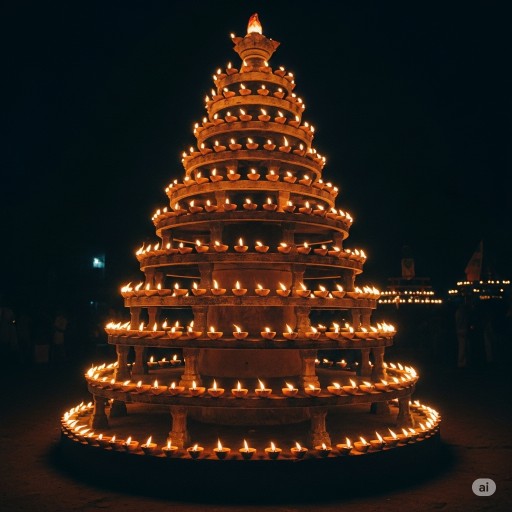
- Approximate Gregorian Months: Mid-November to Mid-December
- Significance: Karthigai is a month of immense spiritual significance, primarily associated with Lord Shiva and Lord Murugan. It’s known for lighting lamps (Deepams) to dispel darkness and invite divine blessings.
- Key Festivals:
- Karthigai Deepam: A spectacular festival of lights, especially grand in Tiruvannamalai, where a giant lamp is lit atop the Annamalai Hill, symbolizing Shiva as an endless column of light. Homes are adorned with rows of small lamps.
- Thirukarthigai: Celebrated by lighting oil lamps in homes and temples, signifying the removal of ignorance and the spread of knowledge.
- Cultural Tidbit: The cool, pleasant weather of Karthigai is perfect for evening temple visits and enjoying the glow of countless lamps.
9. Margazhi (மார்கழி): The Month of Devotion and Early Morning Melodies
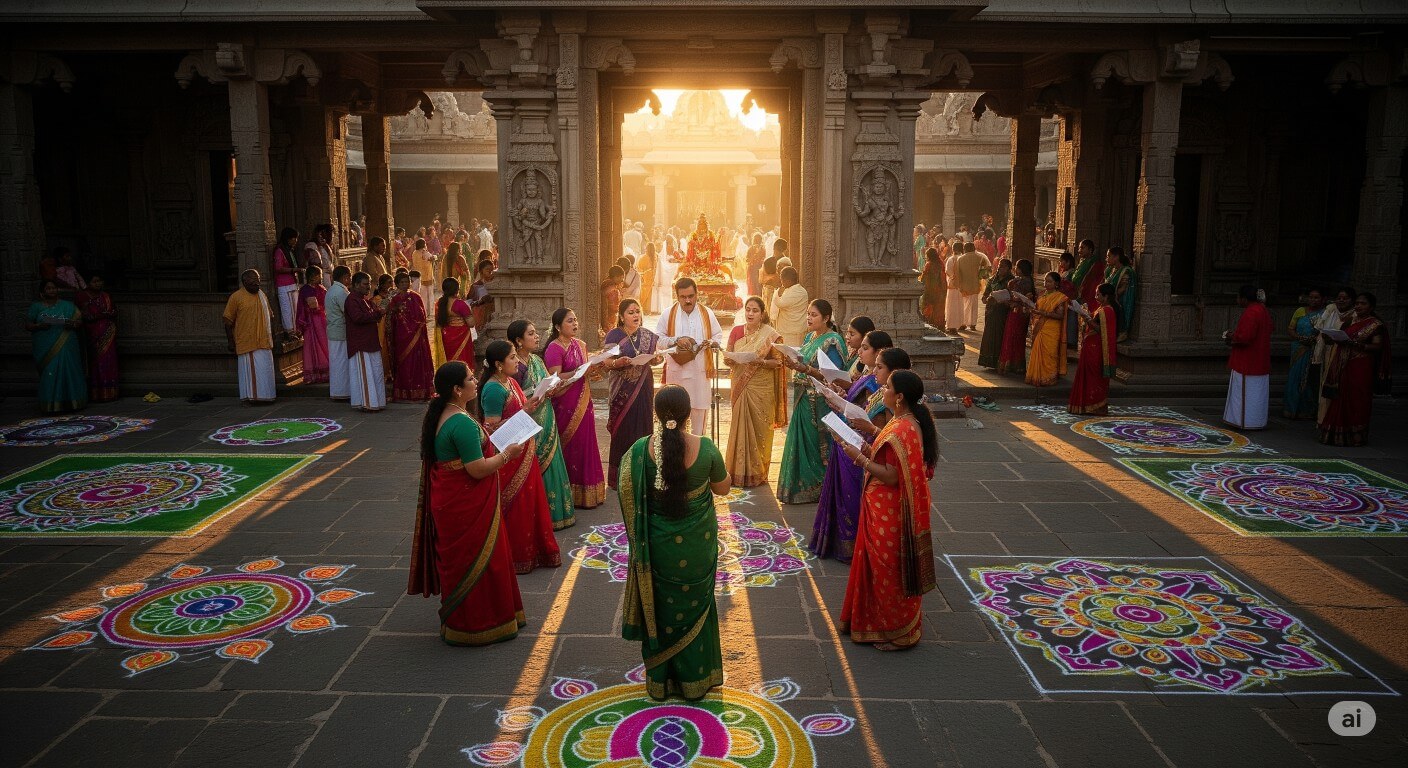
- Approximate Gregorian Months: Mid-December to Mid-January
- Significance: Margazhi is a highly revered and sacred month, considered ideal for spiritual practices, bhajans (devotional singing), and temple visits. It’s believed that performing spiritual activities during Margazhi yields immense blessings.
- Key Festivals:
- Andal’s Thiruppavai and Manikkavasagar’s Thiruvempavai: Devotees wake up early to recite these devotional hymns in temples and homes. The atmosphere is filled with piety and sacred music.
- Arudra Darisanam (Thiruvathira): Celebrated towards the end of Margazhi, it’s a significant festival in Shiva temples, particularly Chidambaram, honoring Lord Nataraja’s cosmic dance.
- Cultural Tidbit: Margazhi is traditionally considered an inauspicious month for weddings and other materialistic ventures, as the focus is entirely on spiritual pursuits. The early morning chill and the sound of devotional music create a serene ambiance.
10. Thai (தை): The Month of Harvest, Prosperity, and New Beginnings
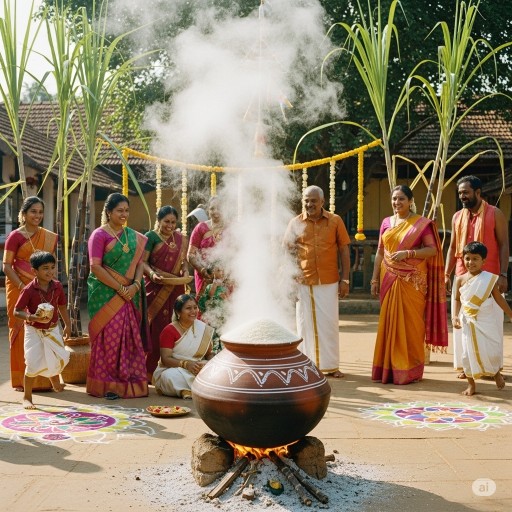
- Approximate Gregorian Months: Mid-January to Mid-February
- Significance: Thai is arguably one of the most celebrated and important months in the Tamil calendar. It marks the harvest season and is a time of immense gratitude, prosperity, and new beginnings. Many auspicious events, especially weddings, are planned during Thai.
- Key Festivals:
- Thai Pongal: The most significant festival of the month, a four-day harvest festival dedicated to the Sun God (Surya) for a bountiful harvest. Celebrated with sweet Pongal, sugarcane, and kolams.
- Mattu Pongal: Dedicated to cattle, honoring their contribution to agriculture.
- Kaanum Pongal: A day for family gatherings, outings, and community celebrations.
- Thai Poosam: A major festival dedicated to Lord Murugan, celebrated with great devotion, especially at Palani and other Murugan temples. Devotees often carry Kavadis.
- Cultural Tidbit: The saying “Thai Pirandhal Vazhi Pirakkum” (தை பிறந்தால் வழி பிறக்கும்) means “When Thai is born, new paths will open,” signifying hope and new opportunities.
11. Maasi (மாசி): The Month of Spiritual Cleansing and Ancestral Rites

- Approximate Gregorian Months: Mid-February to Mid-March
- Significance: Maasi is a month considered highly auspicious for spiritual cleansing, performing ancestral rites, and seeking blessings for liberation. Many visit sacred rivers and temples for holy dips.
- Key Festivals:
- Maasi Magam: A significant festival where devotees take a holy dip in sacred rivers or the sea, believing it purifies their sins and offers liberation. Deities from various temples are often brought to the water bodies for these rituals.
- Maha Shivaratri: The “Great Night of Shiva,” celebrated with all-night vigils, prayers, and offerings to Lord Shiva.
- Cultural Tidbit: The weather in Maasi is usually pleasant, making it conducive for pilgrimages and outdoor religious ceremonies.
12. (பங்குனி): The Month of Divine Unions and Celebratory Fairs

- Approximate Gregorian Months: Mid-March to Mid-April
- Significance: Panguni is the final month of the Tamil calendar and is famous for its numerous temple festivals, especially those celebrating divine marriages (Thirukalyanam). It’s a month of celebration and communal gatherings.
- Key Festivals:
- Panguni Uthiram: A very important festival celebrating the celestial marriages of several deities, including Shiva and Parvati, Murugan and Deivanai, and Rama and Sita. Many temple festivals culminate on this day.
- Ugadi/Gudi Padwa: While the Telugu and Marathi New Years, they often fall in Panguni, influencing celebrations in Tamil Nadu’s border regions.
- Cultural Tidbit: Panguni is a month of vibrant temple fairs and street processions, as communities come together to celebrate the divine. The increasing heat signals the transition back to the new year in Chithirai.
Beyond the Names: Embracing the Spirit of Tamil Months
Learning about the Tamil months is so much more than memorizing names. It’s about understanding:
- The cyclical nature of life: How the calendar mirrors the seasons, agricultural cycles, and human endeavors.
- The deep spiritual roots: How each month carries unique religious significance, fostering devotion and connection to the divine.
- The vibrant cultural tapestry: How festivals and traditions are interwoven with the passage of time, bringing communities together in joy and celebration.
- The wisdom of our ancestors: The calendar is a testament to the astronomical knowledge and cultural foresight of ancient Tamils.
As you continue your Tamil learning journey with Decode Tamil, we encourage you to pay attention to which Tamil month it is. You’ll find that conversations, news, and daily life in Tamil Nadu are often punctuated by references to these months, offering you a deeper, more authentic connection to the culture.
So, the next time someone mentions “Aadi” or “Thai,” you’ll not only understand the name but also grasp the rich cultural context behind it. And that, my friends, is truly decoding Tamil!
What’s your favorite Tamil month and why? Share your thoughts and experiences in the comments below! We’d love to hear from you!
Stay tuned for more insightful articles and engaging lessons from Decode Tamil – your guide to unlocking the beauty of the Tamil language and culture!
Contact Decode Tamil

